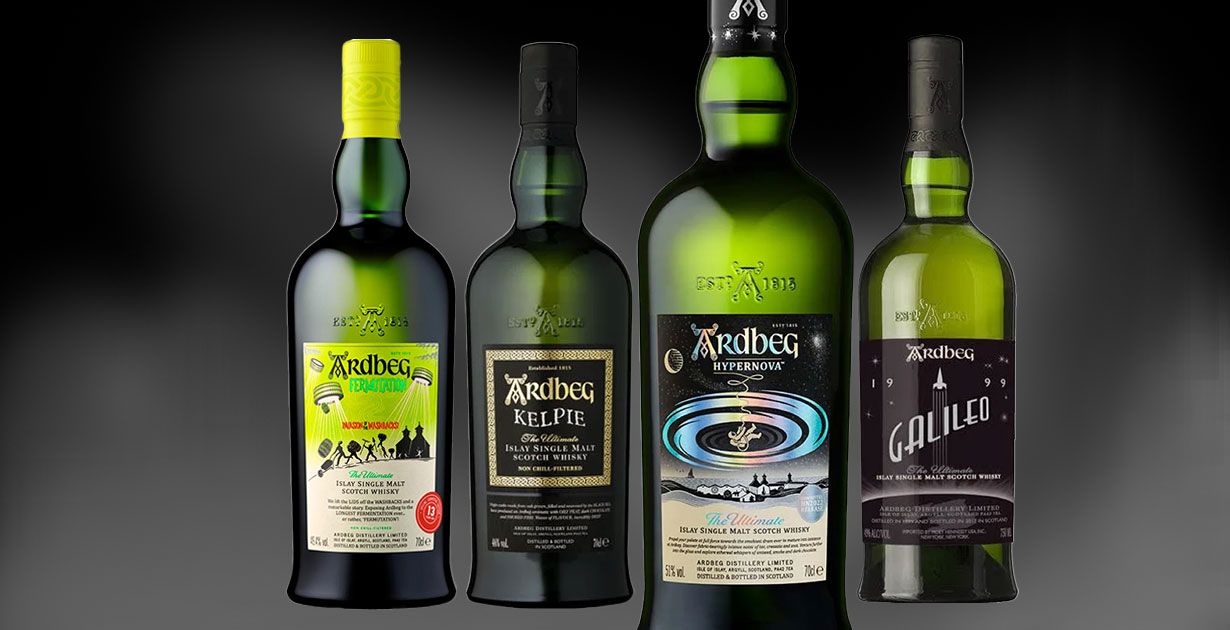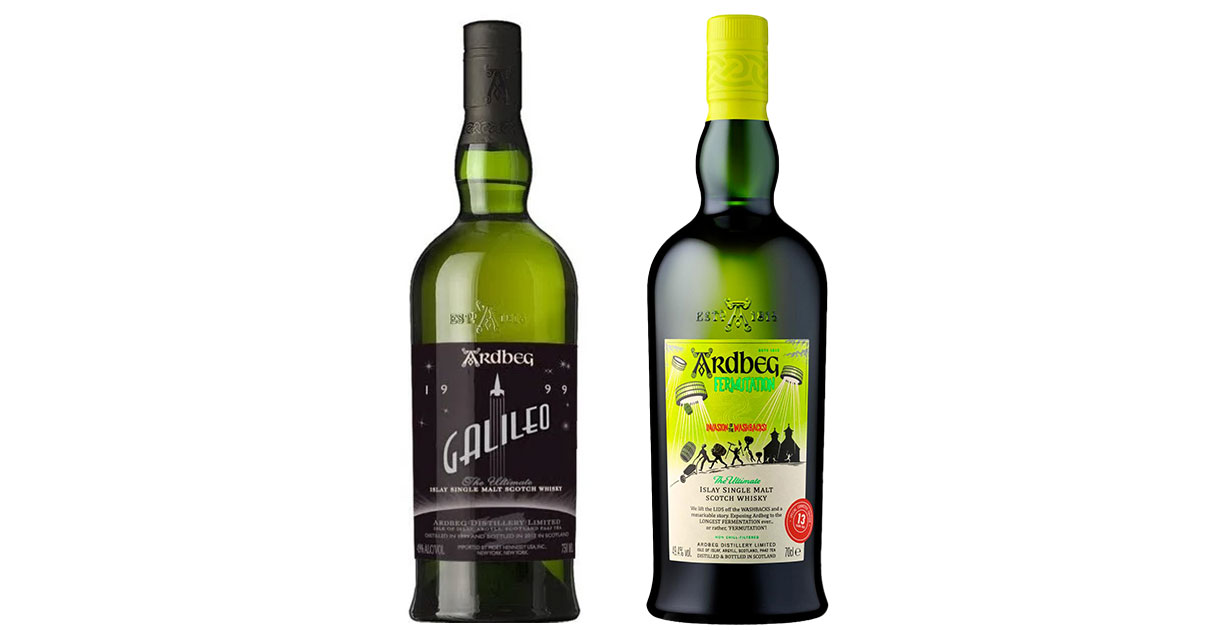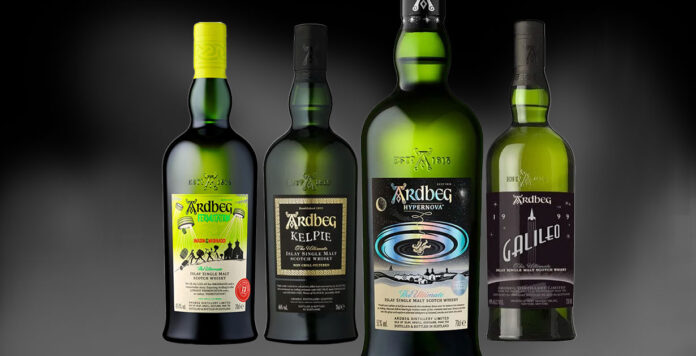
From whisky aged in space to spirit born from a three-week fermentation accident, some of Ardbeg‘s most fascinating releases share one surprising trait: they don’t tell you their age. The latest of these boundary-pushing expressions, Ardbeg Eureka!, continues this tradition of mystery, crafted specifically for the distillery’s 200,000-strong Committee members.
But why would one of Islay‘s most revered distilleries choose to omit age statements from so many celebrated releases? The answer lies in a complex blend of necessity, innovation, and creative freedom that has shaped Ardbeg’s approach since its 1997 revival.
The Creative Freedom Behind the Label


For a distillery renowned for its intense peated character, Ardbeg’s approach to no-age-statement (NAS) whiskies reveals an unexpectedly nimble side to their whisky making. These expressions, unbound by the legal requirement to display their youngest component’s age, have become some of the most innovative releases from this Islay icon.
Speaking via email to The Whiskey Wash, Florent Leroi, Global Marketing Director at Ardbeg, explained: “Free from the constraints of traditional age statements, NAS expressions afford our whisky creators the flexibility to experiment without being limited to casks from specific years. We view these NAS releases as an opportunity to offer something a little bit different – or even a little bit unconventional – to fans.”
This flexibility has proved crucial for Ardbeg. While their Ten Years Old and 25 Years Old expressions anchor the core range, the distillery faces unique challenges with aged stock. Following closures in 1981 and 1996, before reopening in 1997, Ardbeg’s oldest available casks largely date from the late 1990s – unlike many Scottish distilleries with decades of back-vintage stock.
Yet this constraint has sparked remarkable creativity. From whisky aged in space aboard the International Space Station (Galileo) to expressions born from accidental three-week fermentations (Fermutation), Ardbeg’s NAS releases demonstrate how freedom from age statements can lead to extraordinary innovation. The distillery’s experimental nature shines through in releases like Kelpie, matured in rare Black Sea oak, and Hypernova, their peatiest expression to date.


The Science Behind Smoke and Age
For peated whiskies like Ardbeg, the relationship between age and smoky character is particularly complex. “No-age-statement whiskies are a powerful tool for distilleries, particularly those built around peated spirit,” explained Phil Dwyer, manager of The Whisky Shop Manchester and host of Whisky Wednesday, in an email exchange. “The flexibility of NAS whiskies means mature elements can be layered with carefully selected younger whiskies to build depth and balance.”
This balance is crucial because of how peat character evolves. When barley is first peated, its phenol levels (measured in parts per million or ppm) determine the intensity of smoky flavors. However, these levels drop significantly during production – by up to 60-80 percent through mashing and distillation alone. The aging process adds another layer of complexity, with two competing theories: either the peat character gradually diminishes over time, or it remains constant but becomes masked by developing flavors like vanilla and fruit notes.
This is where refill casks play a vital role. “While first-fill sherry casks can dominate a whisky’s character,” Dwyer notes, “a well-used refill cask lets the spirit itself shine, particularly in older peated expressions.” This approach allows Ardbeg to maintain its distinctive house style – intense smoke balanced with maritime salinity and unexpected sweetness – across both aged and NAS releases.
By carefully combining younger spirit (which retains more of its raw, smoky intensity) with older stock that brings complexity and depth, Ardbeg’s NAS expressions achieve something that might be impossible within the constraints of traditional age statements.
The Future of Freedom
While the scotch whisky industry faces headwinds – Diageo’s latest interim results show a 5% decline in their scotch portfolio – Ardbeg’s creative approach to NAS releases might offer a path forward. The challenge isn’t just about maintaining interest among existing enthusiasts, some of whom express fatigue at the pace of new releases.
In a broader industry context, Caspar MacRae, President & CEO of The Glenmorangie Company (Ardbeg’s parent company), shared via email that growth isn’t about selling more bottles to the same person but reaching new audiences. “The growth of the scotch whisky market has largely come from expanding into new, untapped markets,” he explained. “When people discover the flavor and the quality of single malt and learn about how it’s made, they appreciate its heritage.”
Perhaps then, Ardbeg’s experimental NAS releases serve a dual purpose: providing seasoned Ardbeg fans with new expressions to explore while offering intriguing entry points for newcomers to the brand. Whether it’s space-aged whisky or unusually long fermentations, these innovations maintain Ardbeg’s reputation for both quality and creativity – even without a number on the label.

